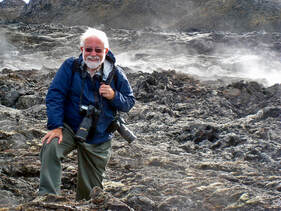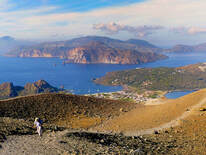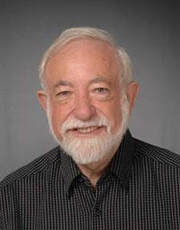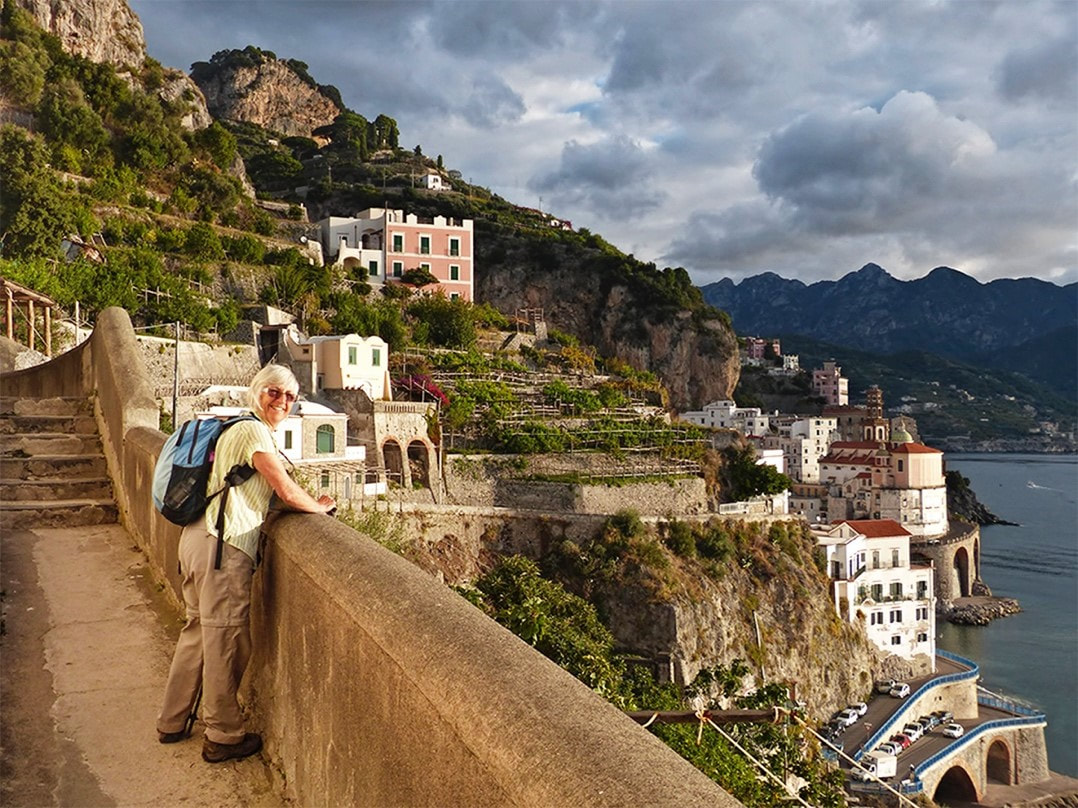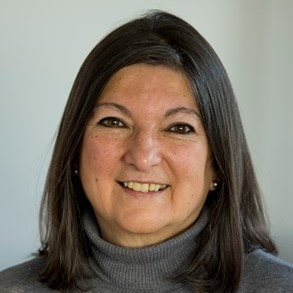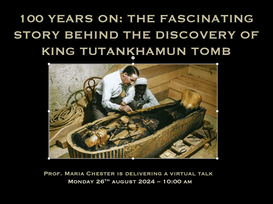Summer Lectures Club 2024 Program
We are pleased to announce that our 2024 program will be presented LIVE on Mondays at Trinity United Church starting 18th March 2024
AND
These lectures will also be live-streamed via
YouTube for those who cannot attend at Trinity United
A favourite speaker from previous SLC meetings,
Dr Alan Morgan, will presenting the first 10 lectures.
More details coming shortly
Summer Lectures Club (SLC) agrees that the Speakers own all Copyright in their presentations, other than such content as may have been taken from other sources on the basis of “Fair Dealing” as provided under the Copyright Act, or the Speakers have explicit written approval to use certain copyright materials, and SLC will not post any part of the Program on our website without the Speakers' prior consent.
|
March 25th
Travels in the Scenic South-Western USA The geology of the south-western states of Arizona and Utah together with parts of Nevada, eastern California and western New Mexico is dominated by deserts, “red-rock” scenery, uplift and faulting, old volcanic outpourings and truly spectacular scenery. Many of the most popular United States National Parks are located within, or border, this region, including the Grand Canyon, Bryce and Zion and many others that are less well known. This lecture will take you through some of these scenic areas with explanations of the natural features as well as plants and wildlife found within them.
|
|
April 1st
A Geologist's view of the World I knew I wanted to be a geologist from the age of eight – but what kind of geologist and
what did it involve? I suppose if anyone asks today, I probably would say a Quaternary geologist, someone who studies the youngest part of the geological column, the time frame of approximately the last 2.6 million years. However, it turned out to be much more than that, because I always had a keen interest in fossils since my first finds in Wales. Subsequently I have wandered the storm-lashed coast of Newfoundland, and the desert outback of Australia looking at some of the world’s oldest multicellular organisms, to the North and South American badlands and their treasures of lost dinosaurs. Then there were both fossil and modern insects, travelling with my wife and children on research adventures into Arctic and Boreal regions of Canada, Alaska, Siberia and Tibet. And let’s not forget volcanoes, both ancient and also very new and active! Permafrost melt, climate change, mammoths, woolly rhinos, semi-fossil lemmings with sharp teeth and ancient hunters with equally sharp flint blades. Minerals and mines, high Arctic wastes, tropical jungles and lost cities…. Well, perhaps I should revise that to say I think I really am a peripatetic geologist as a colleague once described me. After all, life is far too short to experience all that this wonderful world offers us! Let me share some of it with you. |
Please note that there is no lecture on April 8th since many may want to participate in the solar eclipse on that day. Please do NOT look at the eclipse without proper eye protection (regular sunglasses are NOT proper protection).
|
April 15th
Orchid hunting in South-Western Australia, and the Outback Australia is a fascinating continent, slightly smaller in size than the continental United States. It was a source of fascination for early European explorers, such as Cook and his botanist, Joseph Banks, and still later by Darwin who marveled at the exotic flora, strange animals and the terrain of the driest continent. Although Terra Australis was first ‘discovered’ by the Dutch in 1606 and later colonized by the British in the late 1700s, the landmass had already been settled for well over 50,000 years by successive waves of aboriginal peoples who had crossed from south-east Asia when sea level was lower during the Quaternary glaciations. Anne and I have visited Australia many times covering different parts of the country, and a decade ago decided to make a journey to look at the very strange orchids of Western Australia. And so, this talk covers not only our search for these unusual flowers, but also some of our travels elsewhere on the continent.
|
|
April 22nd
Antarctic and Arctic Travels Our world has two cold regions that extend from the north and south poles. The northern area extends over a frozen sea, known as the Arctic Ocean, and onto a variety of land areas that surrounds the sea in Canada, the United States, Russia and Greenland. The southern area is different; - an isolated vast frozen continent, larger than Europe, that is bordered by sea. Both areas have been poorly known by Asian, European and North American explorers for almost 250 years, although indigenous people have occupied parts of the Arctic for at least 14,000 years, and likely traversed it many thousands of years before. This talk will take you to a few parts of this frozen world to show some of the plants and animals of the region and commenting on the fate of some of the European explorers. Lastly there will be remarks about both polar regions that are undergoing extremely rapid warming, and what this means for the world at large.
|
|
April 29th - There is NO lecture this week
In the meantime, you may be interested in this very interesting article with pictures about the Total Eclipse by Dr Morgan. This article was written for Dr Morgan's family and friends but he has kindly allowed us to make it available here.
| |||||||
|
May 6th
Travels in Oceania and parts of the Pacific Rim A visitor from space gazing at our planet through its sixteen eyes over what we know as the Pacific Ocean would regard this as a ‘water world’ and it would be correct. Over 71 percent of our planet is water covered and even we are between 55 to 60 percent water. In this talk we shall explore both the rim of the Pacific, exemplified by what geologists call, ‘The Pacific Ring of Fire’, and some of the different small, and larger island groups that lie within this vast region. Indeed, the Pacific covers about 30% of the planet’s surface and all the continental land masses could be contained within it. The Pacific region comprises Australasia, Melanesia, Micronesia and Polynesia, but the talk will also include a few other regions that lie outside these artificial boundaries. Some of the cultures of the indigenous populations as well as the plant and animals of the regions will also be covered.
|
|
May 13th
One-half Century of Suburban Gardening An ideal suburban garden? Should it be a ‘green desert’ of desirable grasses that emulate an English garden or a naturalised garden that helps to preserve some of the diversity of plant and animal species that are becoming eradicated by our urban sprawl and agricultural practises? The former is easier to maintain, but at an environmental cost of more watering, more chemical additives, often more use of electricity and more contributions to global warming through the use of fossil fuels. It provides little to nothing for the food needed by animals, except for crows and skunks that ravage lawns in their search for beetle larvae. The latter is more difficult to establish but offers many more rewards. This talk will explore the 50-year evolution of a builder-provided ‘fully-grassed surround’ around two urban gardens in Waterloo to an eclectic mix of native plants and some introduced species. These support dozens of insects, including many pollinators such as native bees, honeybees, wasps, flies, dragonflies and damselflies, beetles and butterflies; some common resident birds, (dozens more transients in the spring and fall migrations) as well as a variety of occasional animals that wander by.
|
|
May 27th
Journeys through different parts of the Southern Continents South America, Africa, and smaller pieces of other modern land areas all were once part of the giant super-continent of Pangaea, and more specifically that section known as Gondwana. Subsequently, close to 200 million years of separation has provided different routes for evolution to take place. This talk takes you to South America and South Africa to explore parts of the geology, together with the modern different animal and plants that show both differences and similarities between these, and some other parts of the former supercontinent.
|
Please note that there will be no lecture on June 3rd.
|
June 10th
Travels in the Peloponnesus and Thera (Greece) I was trying to relax in the corner seat of the train that was to take me from the Hoek van Holland to Athens when I noticed the Greek colonel opposite gazing at me with some curiosity. "Where are you going?" he asked. "To Greece." I replied. "Ah! – Good, but where in Greece"? "To Mani". "Mani?" he exclaimed - "A very bad place! They kill people there"; and he proceeded to clench his fist, placing it against his stomach, and after putting his other hand on top, thrust it hard inward! Well, that was 61 years ago - (and I’m glad to say I survived). Besides being the most successful centre in the 1821 war with Turkey and start of the creation of Greece, Mani has since become a far more desirable tourist area, although most people stay clustered on the small beaches along the western coast, and very few venture on foot into the less populated areas covered in this talk. Geographically not so far away is the Aegean Sea with its scattered islands that have long had a link to the Peloponnesus and to ancient Greek history. The eruption of the volcano on the Island of Thera about 3,500 years ago likely swung Minoan to Mycenean rule in the eastern Mediterranean, and this volcanic island will be explored in terms of what we know today
|
|
June 24th
A journey to the area around Naples, Sicily, The Aeolian Islands, and the Amalfi Coast In 2004 I attended the International Geological Congress in Florence and visited the area around Naples on one of the conference excursions. A decade later, Anne and I decided to repeat part of this trip by going to Naples and the potential dangers of Vesuvius and Campi Flegrei, and then by ferry through the Aeolian islands to Sicily, and back to the mainland, finally finishing by walking the better part of the Sorrento peninsula. In this talk we will visit each of these locations with comments on the archaeology, history, physiography, geology and vegetation.
|
|
July 8th
Picasso: Introduction This lecture will be presented virtually to both our audience at Trinity United and our at home audience.
Pablo is dead, Picasso is eternal. We will analyse his oeuvre through the emotions that connected him to the women in his life. Some of them lived WITH Picasso, some of them lived FOR Picasso. The research was based on diaries and books written by his partners as well as by his descendants. Pablo Picasso could be identified with the Minotaur who needed to be fed with the flesh of a virgin. In the first lecture we will examine his life and passions. The second session will look more deeply at his love affairs and marriage from 1900 to 1943 and the third session will cover his partners from 1943 to 1973. Some of his partners were fine artists (Dora Maar, Françoise Gilot), others came from nobility (Olga Khlokhova), others were just young and fresh (Marie-Thérése Walter, Jacqueline Roque). He must have been a true charmer of women. Clever, intelligent women lost their senses over Picasso, others committed suicide, and only one not only survived his spell but later got married and had a child. It is astonishing that the older he became, the younger his partners had to be. |
|
Aug 26th
Jim Brown - Emergency Services in Guelph/Wellington
Jim will speak about EMS history, how it operates today, and some of the challenges they face. Jim is sure to have some interesting stories, and how we as seniors can best prepare for the day we might require EMS support.
Bio: I have been a paramedic for almost 25 years, 20 of those as an Advanced Care Paramedic. I began my career with Toronto Paramedic Service and worked in many different areas of the city. After 17 years I moved on and began working for Guelph-Wellington Paramedic Service. I worked on the ambulance for several more years and was part of the Service Education Team before becoming a Field Superintendent. I recently began a new role as Acting Commander of Training and Recruitment. I have been a resident of Guelph for 18 years and live here with my Wife and two Daughters. |



